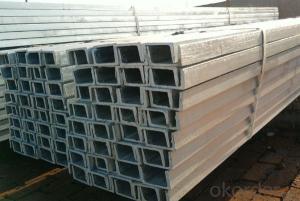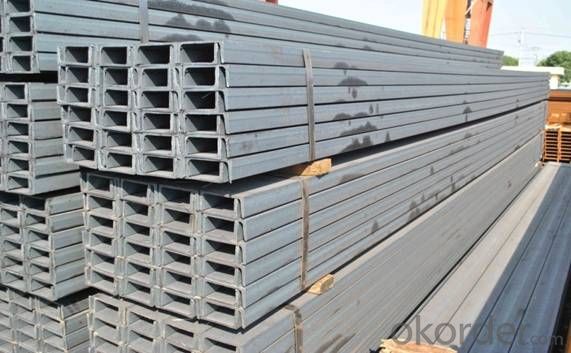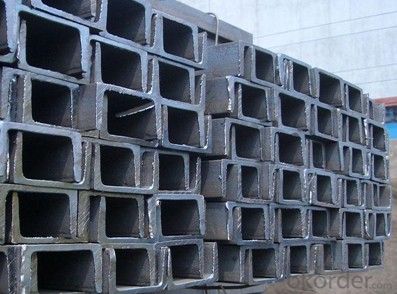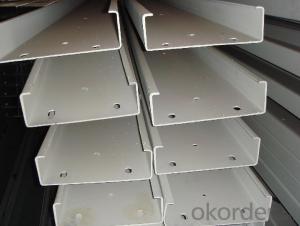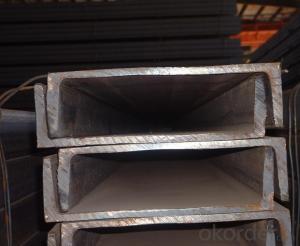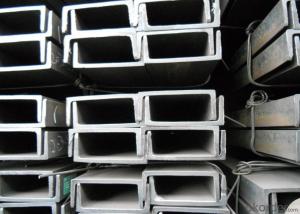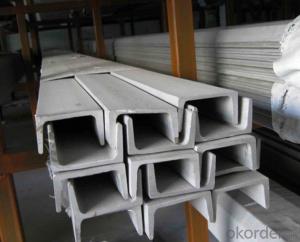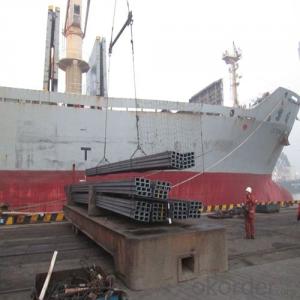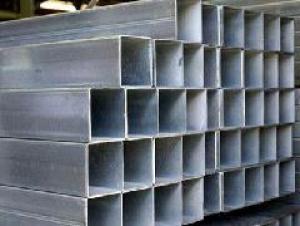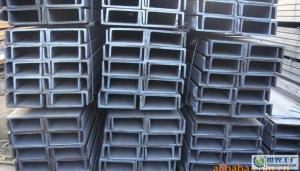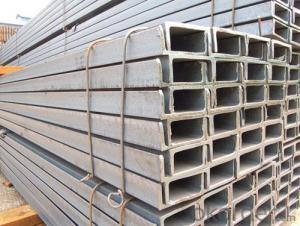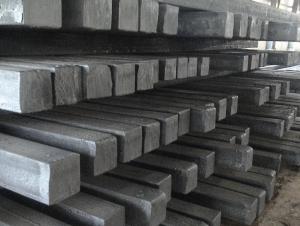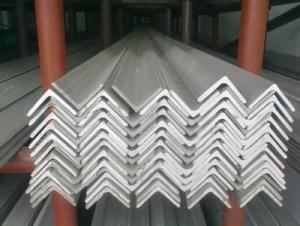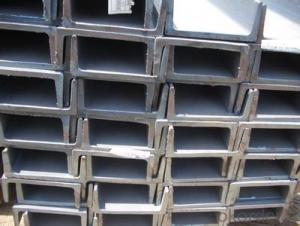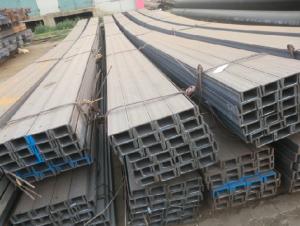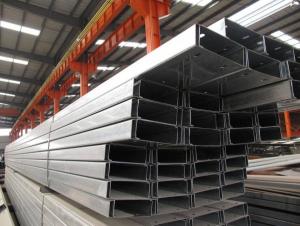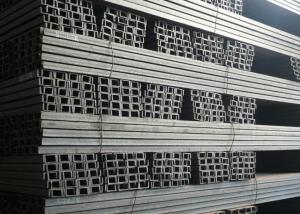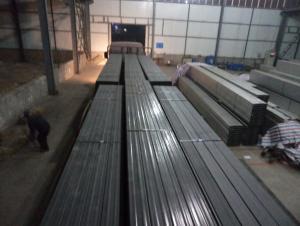U Channel JIS or GB or UPN 5MM-330MM Q235 Q345
- Loading Port:
- Tianjin
- Payment Terms:
- TT OR LC
- Min Order Qty:
- 25 m.t.
- Supply Capability:
- 20000000 m.t./month
OKorder Service Pledge
OKorder Financial Service
You Might Also Like
Product Description:
OKorder is offering U Channel JIS or GB or UPN 5MM-330MM Q235 Q345 at great prices with worldwide shipping. Our supplier is a world-class manufacturer of steel, with our products utilized the world over. OKorder annually supplies products to European, North American and Asian markets. We provide quotations within 24 hours of receiving an inquiry and guarantee competitive prices.
Product Applications:
According to the needs of different structures, Angle can compose to different force support component, and also can be the connections between components. It is widely used in various building structures and engineering structures such as roof beams, bridges, transmission towers, hoisting machinery and transport machinery, ships, industrial furnaces, reaction tower, container frame and warehouse etc
Product Advantages:
OKorder's Steel U Channel JIS or GB or UPN 5MM-330MM Q235 Q345 are durable, strong, and resist corrosion.
Main Product Features:
· Premium quality
· Prompt delivery & seaworthy packing (30 days after receiving deposit)
· Corrosion resistance
· Can be recycled and reused
· Mill test certification
· Professional Service
· Competitive pricing
Product Specifications:
Manufacture: Hot rolled
Grade: Q195 – 235
Certificates: ISO, SGS, BV, CIQ
Length: 6m – 12m, as per customer request
Packaging: Export packing, nude packing, bundled
Sizes: 25mm-250mm | ||||||||||
a*t | ||||||||||
25*2.5-4.0 | 70*6.0-9.0 | 130*9.0-15 | ||||||||
30*2.5-6.6 | 75*6.0-9.0 | 140*10-14 | ||||||||
36*3.0-5.0 | 80*5.0-10 | 150*10-20 | ||||||||
38*2.3-6.0 | 90*7.0-10 | 160*10-16 | ||||||||
40*3.0-5.0 | 100*6.0-12 | 175*12-15 | ||||||||
45*4.0-6.0 | 110*8.0-10 | 180*12-18 | ||||||||
50*4.0-6.0 | 120*6.0-15 | 200*14-25 | ||||||||
60*4.0-8.0 | 125*8.0-14 | 250*25 | ||||||||
FAQ:
Q1: Why buy Materials & Equipment from OKorder.com?
A1: All products offered byOKorder.com are carefully selected from China's most reliable manufacturing enterprises. Through its ISO certifications, OKorder.com adheres to the highest standards and a commitment to supply chain safety and customer satisfaction.
Q2: How soon can we receive the product after purchase?
A2: Within three days of placing an order, we will begin production. The specific shipping date is dependent upon international and government factors, but is typically 7 to 10 workdays.
Q3: What makes stainless steel stainless?
A3: Stainless steel must contain at least 10.5 % chromium. It is this element that reacts with the oxygen in the air to form a complex chrome-oxide surface layer that is invisible but strong enough to prevent further oxygen from "staining" (rusting) the surface. Higher levels of chromium and the addition of other alloying elements such as nickel and molybdenum enhance this surface layer and improve the corrosion resistance of the stainless material.
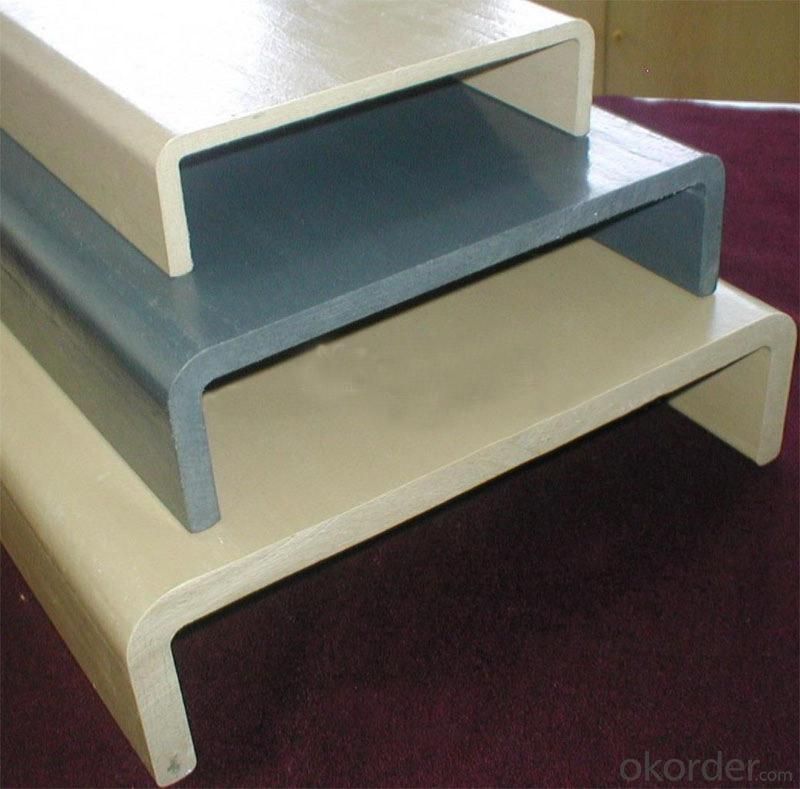
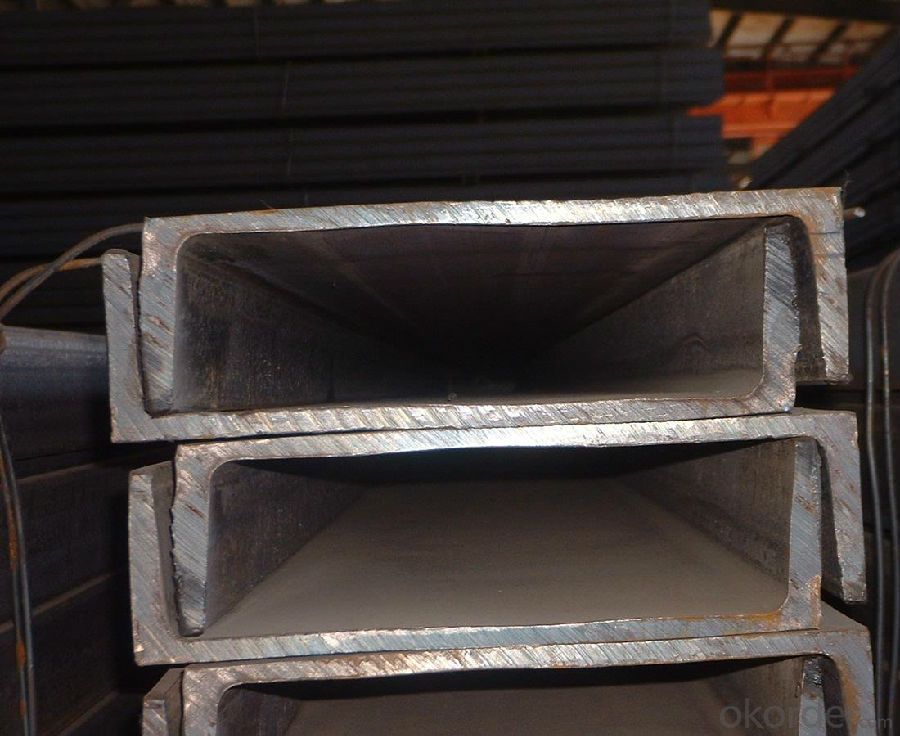
- Q: Can steel channels be used for solar panel mounting?
- Indeed, steel channels have the ability to be utilized for the purpose of mounting solar panels. Opting for steel channels as a mounting solution not only offers robustness and longevity, but also the capacity to bear the weight of the panels and withstand diverse weather conditions. Moreover, steel channels can be effortlessly tailored and adapted to meet the precise demands of the solar panel installation. They furnish a dependable base for the panels, allowing for installation on rooftops, ground mounts, or other structures. Nevertheless, it is crucial to guarantee the proper installation and anchoring of the steel channels to ensure the requisite stability for the solar panels.
- Q: Can steel channels be used in the aerospace manufacturing industry?
- Yes, steel channels can be used in the aerospace manufacturing industry. They are commonly used for structural applications, such as in the construction of aircraft frames, wings, and support structures. Steel channels offer high strength and rigidity, making them suitable for withstanding the demanding conditions of aerospace operations.
- Q: What are the factors to consider when selecting the right type of steel channel?
- When selecting the right type of steel channel, several factors need to be considered. These include the required load-bearing capacity, the intended application or industry, the desired level of corrosion resistance, the environmental conditions, the length and size requirements, and the budget. Additionally, factors such as the availability and ease of installation should also be taken into account.
- Q: What are the different loadings that steel channels can withstand?
- Steel channels can withstand a wide range of loadings, making them a versatile and reliable structural component. The specific loadings that steel channels can withstand depend on various factors, including the type and grade of steel, the size and shape of the channel, and the design of the overall structure. Steel channels are commonly used in construction and engineering applications to provide support and stability. They can withstand both static and dynamic loadings, which include dead loads, live loads, and environmental loads. Dead loads refer to the weight of the structure itself, including the weight of the steel channels and any other components or materials. Steel channels are designed to bear this constant load without deformation or failure. Live loads are temporary loads that can vary in magnitude and location. These loads include the weight of people, furniture, equipment, and other transient forces. Steel channels are designed to support these loads and distribute them effectively to other structural members. Environmental loads include wind loads, snow loads, and seismic loads. Steel channels are designed to resist these external forces and maintain the structural integrity of the building or structure. Wind loads can exert significant pressure on the channels, especially on tall or exposed structures. Snow loads can accumulate and add weight to the structure, which the steel channels must be able to support. Seismic loads refer to the forces generated during an earthquake, and steel channels are designed to withstand these dynamic loads and prevent the structure from collapsing. In addition to these common loadings, steel channels can also withstand other specialized loadings, such as impact loads, vibration loads, and thermal loads. Impact loads can occur due to accidental collisions or sudden impact events and require steel channels to have high strength and toughness. Vibration loads can result from machinery or equipment operation and require steel channels to have good fatigue resistance. Thermal loads can cause expansion and contraction of the steel channels due to temperature changes, and they must be designed accordingly to prevent failure. Overall, steel channels have a high load-bearing capacity and can withstand a wide range of loadings, making them suitable for various structural applications in construction, engineering, and industrial sectors.
- Q: Can steel channels be used in rooftop installations?
- Yes, steel channels can be used in rooftop installations. Steel channels are commonly used in construction for their strength and durability. When it comes to rooftop installations, steel channels can be used for various purposes such as supporting solar panels, HVAC units, or other equipment. They provide a stable and secure platform for these installations and can withstand the weight and stress associated with rooftop applications. Furthermore, steel channels can be designed and fabricated to suit specific requirements and can be easily installed on rooftops. Overall, steel channels are a reliable and practical choice for rooftop installations.
- Q: What are the different types of connections for steel channels in modular office systems?
- There are various types of connections used for steel channels in modular office systems, including bolted connections, welded connections, and adjustable connections. Bolted connections involve using bolts and nuts to secure the channels together, providing flexibility for disassembly and reassembly. Welded connections involve fusing the steel channels together using heat, creating a strong and permanent connection. Adjustable connections allow for fine-tuning and leveling of the channels, ensuring proper alignment and stability in the modular office system.
- Q: 10kV and below the distribution cabinet in the room, the basic channel should be higher than the indoor ground level? Which specification is clearly defined?
- The distribution cabinet is used in occasions where the load is more dispersed and the circuit is less. The motor control center is used in the situation where the load is concentrated and the circuit is more. They distribute the power of a circuit to the nearest load. This class of equipment provides protection, monitoring and control of loads.
- Q: What are the different cross-sectional shapes of steel channels?
- Steel channels are structural components that come in various cross-sectional shapes and are commonly used. The different shapes of steel channels include C channels, U channels, and Z channels. C channels, also referred to as C-sections or C beams, have a distinctive profile in the shape of a C. They have a wide top and a narrow bottom, with two flanges that extend outward at a right angle from the web. C channels are used in construction and engineering applications to provide structural support and stability. U channels, also known as U-sections or U beams, have a profile in the shape of a U. They have parallel flanges that connect through a web in the center. U channels are widely utilized in manufacturing and industrial applications, specifically in conveyor systems, support structures, and framing. Z channels, also referred to as Z-sections or Z beams, have a profile in the shape of a Z. They have a vertical web with two flanges that are angled outward in opposite directions. Z channels are frequently employed in construction and architectural applications to provide strength and stability in various structural elements such as roof purlins and wall studs. Each of these cross-sectional shapes possesses distinct characteristics and advantages, which make them suitable for different applications. The selection of a steel channel shape depends on factors such as load-bearing requirements, structural design, and specific project needs.
- Q: Are steel channels suitable for swimming pool installations?
- Swimming pool installations do not lend themselves well to steel channels. Usually utilized for structural support or as a framework for substantial constructions such as bridges or buildings, steel channels lack the necessary qualities for swimming pool installations. In contrast, concrete or fiberglass materials are commonly employed due to their resilience, waterproof characteristics, and capacity to endure continuous contact with water and chemicals. Specifically engineered for swimming pool installations, these materials guarantee a dependable and enduring solution.
- Q: How are steel channels measured and specified?
- Steel channels are measured and specified based on their dimensions and properties. The measurement of steel channels includes their height, width, and thickness. The height of a channel is usually measured as the vertical distance between the top and bottom flanges. The width refers to the horizontal distance between the flanges. The thickness, also known as the gauge, is the distance between the inner surfaces of the flanges. It determines the strength and load-bearing capacity of the channel. The thickness is usually measured in millimeters or inches. In addition to these basic measurements, steel channels are also specified based on their weight per unit length. This weight is commonly expressed in pounds per foot or kilograms per meter. It is essential for calculating the total weight of the channel required in a construction project. Steel channels may also have specific designations or grades based on their composition and properties. For instance, some channels may be designated as "C" channels, while others may be classified as "MC" or "S" channels. These designations indicate the shape and structural properties of the channel. Specifying steel channels involves providing detailed information about the desired dimensions, thickness, weight, and any specific grade or designation required. This information helps in accurately procuring and utilizing the appropriate steel channels for a construction or engineering project.
Send your message to us
U Channel JIS or GB or UPN 5MM-330MM Q235 Q345
- Loading Port:
- Tianjin
- Payment Terms:
- TT OR LC
- Min Order Qty:
- 25 m.t.
- Supply Capability:
- 20000000 m.t./month
OKorder Service Pledge
OKorder Financial Service
Similar products
Hot products
Hot Searches
Related keywords
